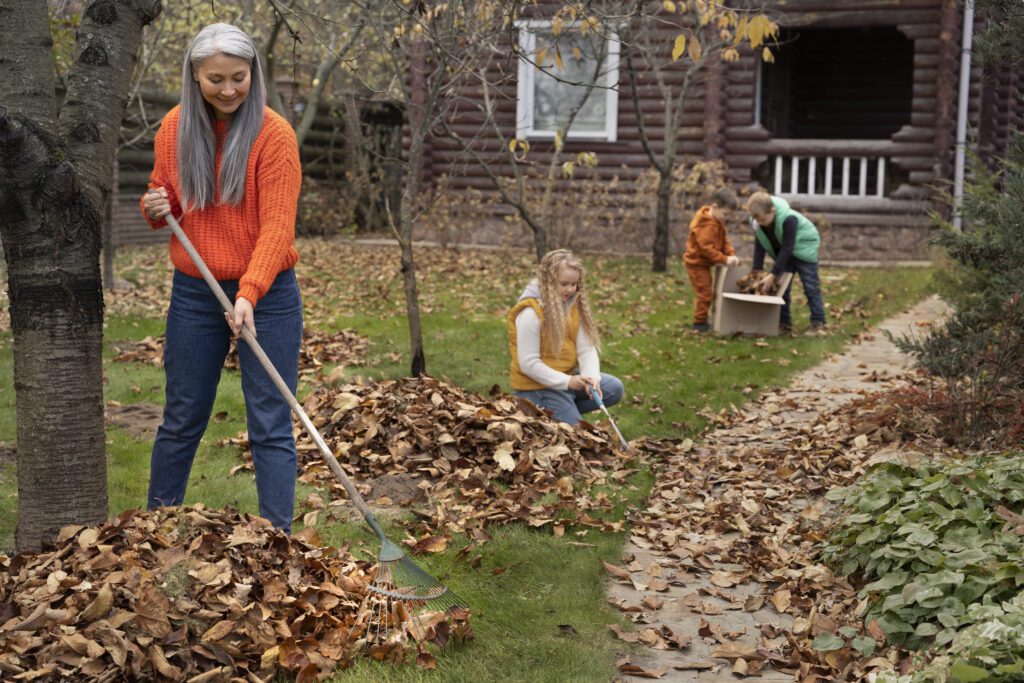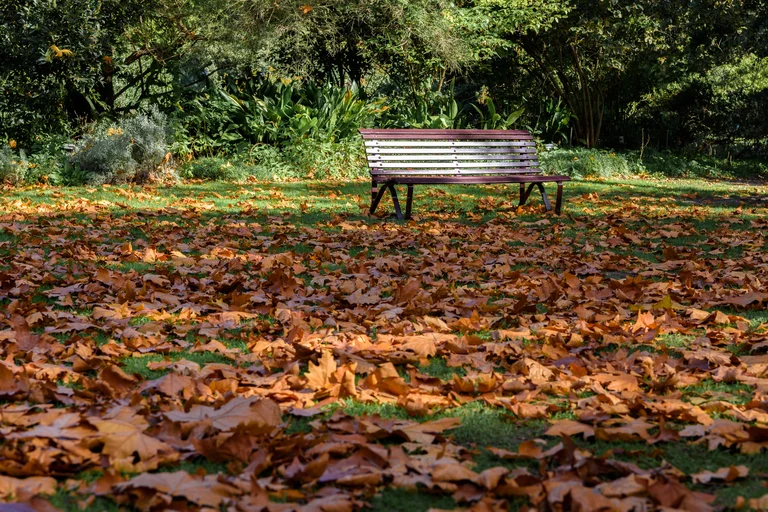Prepare Your Garden For Fall With Tips For Every Climate Zone
As the days grow shorter and the air turns cool, fall becomes the perfect time to prepare your garden for a fresh start. Preparing your garden for fall isn’t just about raking leaves—it’s about protecting your plants, rebuilding your soil, and planning for a healthier garden next year.
Whether you live in the warm South, the chilly Midwest, or along the rainy Pacific Northwest, every U.S. region has its own fall routine. Here’s how you can prepare your garden for fall—step by step—based on your climate zone.
Why Fall Is the Best Time to Prepare Your Garden
The actual groundwork starts in the fall, but many gardeners think of spring as the planting season. The air is cool enough to reduce plant stress in the fall, but the soil is still warm enough for roots to grow.
Doing the right prep work now helps you:
- Keep your plants safe from winter winds and frost.
- Before there is a lot of rain or snow, preserve the soil nutrients
- Control pests and weeds that could overwinter and return stronger in spring.
- Plant bulbs or new crops that require cool weather to take root.
- Save time and money by reducing spring cleanup.
Plus, by preparing your garden now, you’ll save yourself a lot of effort when spring arrives—your soil will already be rich, clean, and ready to grow.
How to Prepare Your Garden in Fall:

Gardening in the fall doesn’t have to be too much work. The key is to focus on activities that improve your soil and protect your plants. These steps apply to almost every climate zone, no matter the size of your raised beds or backyard garden.
1. Clean Up and Remove Debris:
Remove fallen fruit, spent annuals, and any diseased plants first. Over the winter, leaving decaying matter behind attracts pests and spreads fungal infections. Remove any diseased material, but compost any healthy material.
2. Add Compost and Organic Matter:
Spread a 2–3 inch layer of compost or leaf mold over your garden beds. It feeds your soil microbes and improves structure during the winter.
Before adding compost, gently turn over or aerate your compacted soil.
3. Protect Perennials:
Cut back any dead or damaged parts of your perennial plants. Add a thick layer of mulch around the base to keep the roots warm during cold weather. If your area gets heavy frost, cover delicate plants with garden fabric or burlap for extra protection.
4. Adjust Watering and Irrigation
As the weather cools, your garden’s water needs change. Reduce watering frequency to prevent soggy roots, but don’t let the soil completely dry out either. Plants still need consistent moisture to stay healthy while preparing for dormancy. If you use drip irrigation, adjust the timer settings to shorter cycles suitable for fall temperatures.
5. Mulch Before Winter:
Mulching is essential when getting your garden ready for fall. It helps regulate soil temperature, retain moisture, and keep weeds from taking over. Use natural materials like straw, shredded leaves, or bark mulch.
For best results, apply mulch after the first frost, when the soil is cool but not frozen.
6. Evaluate and Improve Your Landscape:
Fall is the perfect time to assess your garden’s performance. Take a look at which plants didn’t thrive and identify areas lacking sunlight, proper drainage, or balance. This is your chance to adjust garden beds, reseed bare patches, or introduce native plants that are better suited to your climate. A few simple updates this fall will set your landscape up to be healthier and more vibrant when spring rolls around.
7. Fertilize Your Garden:
Before winter arrives, fall is the ideal season to fertilize your soil. Apply a slow-release or organic fertilizer to strengthen roots and prepare plants for spring growth. In order for the roots of cool-season grasses to store nutrients, fertilize them 2–3 weeks before the ground freezes. For uniform coverage, use a broadcast spreader and granular, fall-specific feed. Water thoroughly to aid in nutrient absorption before dormancy.
8. Store and Clean Your Tools:
Spend some time cleaning your garden tools before winter arrives. Scrub them clean and remove any rust. To prevent damage, oil the metal components, sharpen the blades, and keep them in a dry location. When spring arrives, taking care of your tools now will save you money and time. Additionally, gardening is safer and easier with well-maintained tools.
What to Plant in a Fall Garden:
You might think planting season ends with summer, but fall is actually one of the best times to grow. The soil stays warm from summer, while cooler air reduces plant stress.
Try planting these in the fall:
Fall Vegetables to Plant
- Broccoli
- Kale
- Carrots
- Spinach
Garlic (plant in late fall for early spring harvest)
Flowers & Ornamentals
- Mums
- Pansies
- Violas
- Tulips and daffodils (bulbs for spring blooms)
Trees & Shrubs
Fall is the ideal season to plant trees & shrubs because roots can establish before winter dormancy. If you want to buy at an affordable price, consider purchasing them from Garden Goods Direct.
Pro Tip: When planting in the fall, add extra mulch around the roots of new plants. It helps keep the soil warmer for longer and protects it from frost damage. To know which plants will grow best in your area and when to plant them, check the USDA Hardiness Zone Map.
Prepare Your Garden Soil for Next Year
1. Add Organic Fertilizer:
Select organic fertilizers with a slow breakdown, such as fish emulsion or bone meal. Over the winter, these decompose and naturally fertilize the soil.
2. Plant Cover Crops:
Cover crops such as clover, rye, or winter wheat prevent erosion and return nitrogen to the soil. They’re an eco-friendly way to keep your garden active through the cold months.
3. Test the Soil:
Use a simple soil test kit (available at garden centers or online) to check pH and nutrient levels.
Now is a good time to test the soil while we’re digging all this. Doing a soil test at this time of year allows you enough time to receive the results and add the recommended amounts of slow-release fertilizer, such as lime, so that the expansion and contraction brought on by freeze-thaw action and winter precipitation can work the additives—as well as any organic matter you may want to add—down into the soil.
Fall Gardening Tips for Every U.S. Climate Zone:
The U.S. includes over ten climate zones, and each one faces different fall conditions. Here’s a quick guide to what gardeners should focus on across the country:
1. Northern Zones (3–5):
- Focus on cleanup and soil prep before the first frost (often early October).
- Mulch heavily and protect perennials from deep freezes.
- Avoid planting late crops—focus on bulbs and cold-hardy greens.
2. Southwest (Zones 8–10):
Fall is a great time to plant because of the mild weather here.
- Start citrus trees, herbs, and vegetables like broccoli or lettuce.
- Water deeply once a week to encourage root growth.
- Use shade cloths to protect tender plants from unexpected heat waves.
3. Central Zones (6–8):
- You can still plant cool-season veggies like kale, carrots, and garlic.
- Keep watering shrubs and trees until the ground freezes.
- Add compost and mulch after the first light frost.
4. Southeast (Zones 7–10):
Humidity stays high even as temperatures cool.
- Watch for late-season pests and fungal growth.
- Use mulch to keep soil moist and control weeds.
- Plant hardy vegetables like carrots, spinach, and cabbage.
You can naturally protect your garden without using chemicals or wasting water by adapting to the climate of your area.
Sustainable Fall Gardening Practices:
Here are a few final steps to help get your garden ready for fall & winter:
- Leave a few leaf piles under trees to give wildlife a cozy shelter for winter
- Save seeds from your summer crops to plant again next season.
- Use organic pest control instead of chemical sprays.
- Turn garden waste into compost rather than sending it to landfills.
Preparing your garden for fall isn’t just a choice. It’s a smart investment in the future of your garden. You can prevent headaches and have a healthier, more productive garden come early spring with a few weekends of work. You can prepare your garden to follow these tips.
Whether you’re raking leaves in New York, planting greens in Texas, or mulching beds in Oregon, every gardener can make fall count. Treat your soil with care, protect your plants, and plan ahead—your garden will thank you when the first blossoms appear again.
FAQs
Q1. When should I start preparing my garden for fall?
Ans. Start in late August or early September, depending on your location. Northern states should finish prep before the first frost, while southern states have a longer window.
Q2. Should I fertilize my garden in the fall?
Ans. Yes, but use organic slow-release fertilizers. These decompose over the winter, feeding soil microbes and improving structure without burning plant roots.
Q3. How do I prepare my vegetable garden for winter?
Ans. Pull out your old crops and clear the garden. Mix compost into the soil to add nutrients. Then plant a cover crop to keep the soil healthy and ready for spring.

